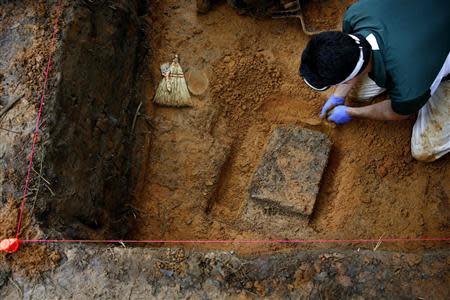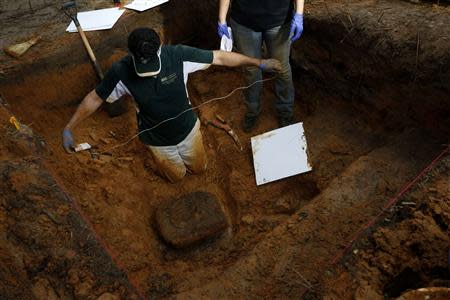Grim search for remains at ex-Florida reform school ends for now
By Bill Cotterell MARIANNA, Florida (Reuters) - Researchers wound up the first phase of their grim work in the Florida Panhandle on Tuesday, after hunting for the remains of young boys believed to have been secretly buried more than 50 years ago at a notorious reform school. Erin Kimmerle, a University of South Florida anthropologist who headed the four-day excavation near the Arthur G. Dozier School for Boys in Marianna, Florida, said the skeletal remains of two youths had been recovered and would undergo DNA analysis. Ground-penetrating radar has indicated that as many as 50 graves are located in an area outside the now-padlocked school known as "boot hill." Throughout its 111-year history, the Dozier School was known as a dreaded lock-up for juvenile offenders from across Florida. Almost 100 detainees were known to have died at or disappeared from the 1,400-acre (566-hectare) institution near the Alabama border - mainly black youths whose families had no way of learning what happened to them in an era of legal racism in the South. Especially notorious was "the White House," a small brick building where former inmates -- now in their 60s and 70s -- say boys were regularly beaten, raped, tortured and probably killed. "Our objective was two or three," said Kimmerle of the four-day dig. "Given the rain and the conditions, we just stopped at two," she told reporters. Kimmerle, who worked with international teams unearthing evidence of mass graves used in war crimes trials stemming from the conflict in the former Yugoslavia, plans to resume work at the site later this year, possibly as early as next month. With small shovels, sometimes bare hands, the researchers toiled in gnat-infested woods across a busy highway from the Dozier School, which the state closed in 2011. They concentrated on the area around the initial two graves excavated, finding coffin wood, hinges, brass pins from a burial shroud and some buttons - along with dental and skeletal remains that Kimmerle said appeared to be those of boys between 10 and 13 years old. There was no way of determining cause of death for either youth, Kimmerle said. One grave had "elaborate coffin hardware" that looked like it dated back to sometime "probably after the 1930s," but the other contained plain wood, she said. Florida has no statute of limitations for murder, but police and prosecutors do not expect anyone to be held legally accountable for deaths at the school. The recovered remains are being handled like evidence nonetheless, locked in secure boxes for laboratory examination first at USF and then at the University of North Texas. Kimmerle said 10 DNA samples have been taken from known family members of victims, so remains found at the site can be matched to living descendants and bones can be given to families for re-burial. "The mission is really for the families...That's why we're here," she said. The Florida legislature appropriated $190,000 for the work and the U.S. Justice Department approved a $423,000 grant for DNA matching. (Editing by Tom Brown, Tim Dobbyn and Leslie Gevirtz)


